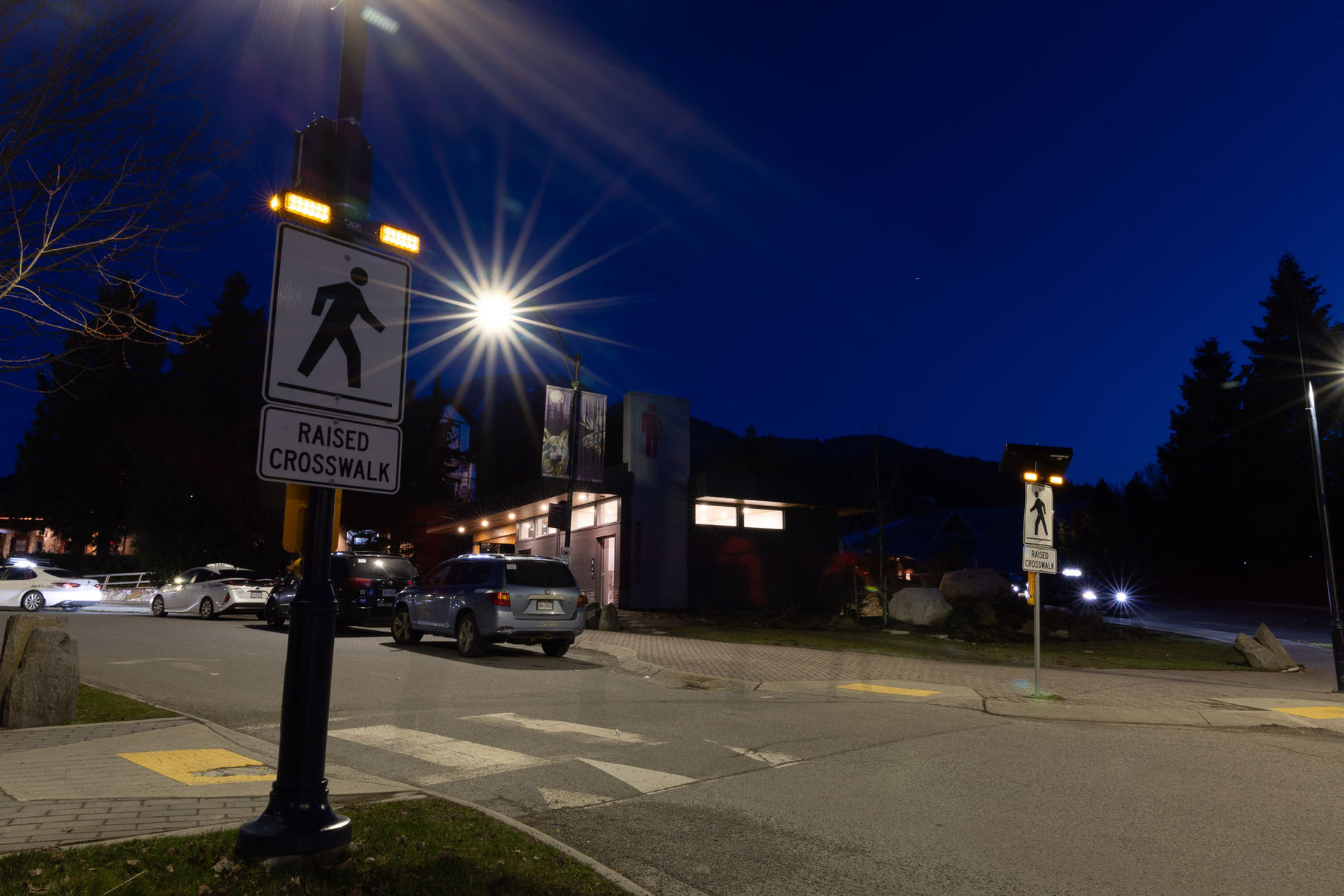
THE FUTURE OF CROSSWALK LIGHTING IS HERE


ENHANCED VISIBILITY AND IMPROVED SAFETY
Crosswalk and Illumination Systems are purpose-built traffic safety solutions designed to enhance pedestrian safety by improving pedestrian visibility and increasing awareness among motorists.
These devices go beyond their primary role of safeguarding pedestrians, actively contributing to the overall safety and quality of life in urban areas. Moreover, they serve as integral components in urban planning and contemporary transportation infrastructure.
The combined use of these solutions yields a substantial improvement in roadway safety. Their integrated approach involves advanced warnings and notifications, offering benefits to all roadway users and by enhancing the overall safety and livability of urban environments.

FHWA Compliant
IES Compliant
TAC Compliant

LumiWalk can be paired with any other JSF system to meet any configuration needs. From RRFB Crosswalks, to flashing signs at intersections, the offers autonomous traffic control and pedestrian safety wherever it is.
ADVANTAGES AND BENIFITS

Enhanced Visibility: Overhead lights make pedestrian crossings more visible to both drivers and pedestrians, especially in low-light conditions or bad weather.


Improved Safety: By clearly indicating when it is safe for pedestrians to cross and when they should wait, overhead crosswalk lights contribute to safer pedestrian behavior. This can lead to a reduction in accidents involving pedestrians and vehicles.


Compliance with Traffic Laws: Overhead crosswalk lights serve as clear indicators of when pedestrians have the right of way. This helps reinforce traffic laws and encourages both drivers and pedestrians to adhere to the established rules, contributing to a safer road environment.


Accessibility for People with Disabilities: Crosswalk lights often include audible signals, vibrating surfaces, or other features to assist individuals with visual or hearing impairments. These features enhance accessibility and ensure that all pedestrians can safely navigate road crossings.


Reduced Accidents and Fatalities: The primary goal of overhead crosswalk lights is to reduce the number of accidents and fatalities involving pedestrians. By providing clear signals and promoting orderly crossing behavior, these lights contribute to the overall safety of road users.


Adaptability: Overhead crosswalk lights can be adapted to suit the specific needs of different intersections and pedestrian crossings. This flexibility allows for the implementation of solutions tailored to the unique characteristics of each location.

Vertical Luminance and Pedestrian Fatalities
Problem: Since 2020, pedestrian road fatalities in the United States have increased by 18%. As of June 2022, U.S. pedestrian fatalities had risen to 3,434. Understanding the causes of this rise, and how to we as part of the road safety industry can be a part of the solution, requires a more granular look at the problem.
From the data, provided by National Safety Council (NSC) and the Fatality Analysis System (FARS), we get a clearer picture of where and how these fatalities occur:
80.40% occur in rural communities, due to the higher volume of people.
75.98% occur during dark hours, when visibility is low.
75.83% Happen at non-intersections, where lighting is often scares.
Typically, a single luminaire will be installed directly above the crosswalk. While this may provide lots of light on the crosswalk itself it does not provide adequate vertical luminance on the pedestrian.
We know the minimum vertical luminance required is 20 lux but with a light directly above the pedestrian (our vertical surface) we are not achieving sufficient (or any) vertical luminance. By moving the luminaire ahead of the crosswalk, we can achieve adequate vertical luminance
Rural/Urban Population Spread
Collision Location
Light Conditions
Visibility and Contrast?
When it comes to pedestrian visibility we look at a few key elements; roadway lighting and signalling, vehicle headlamps, pedestrian clothing, and the visual background at that location. All of these elements distill down to one key component; contrast. At night, luminance contrast is the only contrast we can affect and the one we use to see pedestrians. In the images below we show the difference between negative and positive luminance contrast.
PEDESTRIAN VISIBILITY: this is the distance at which a driver can see a pedestrian well enough to be able to respond appropriately to the pedestrian’s presence.
CONTRAST: there are two types of contrast that we look at; color contrast, which is based on the color difference between an object and its background. More importantly we look at luminance contrast, which is the difference in brightness between an object and its background. Looking at the below examples comparing positive and negative contrast its obvious positive contrast create far greater visibility of a pedestrian for approaching traffic.
WHAT IS LUMINANCE?
Luminance is the amount of light perceived by the road user; and uniformity is the ratio of illuminance or luminance values, such as maximum to average, average to minimum, or maximum to minimum.


Need help configuring your vertical luminance system? JSF's sales and engineering team can assist! Contact us now to start your quote.










